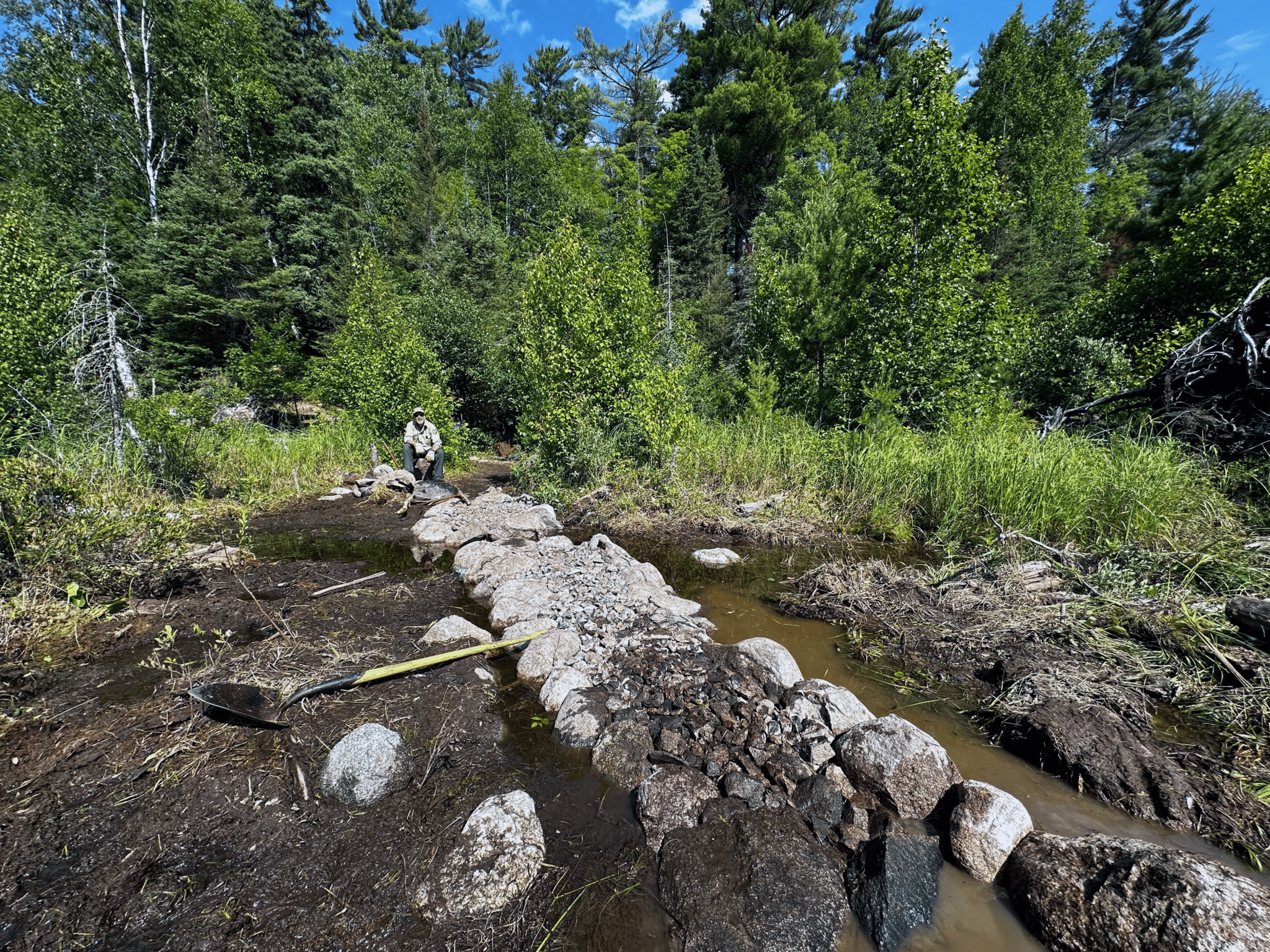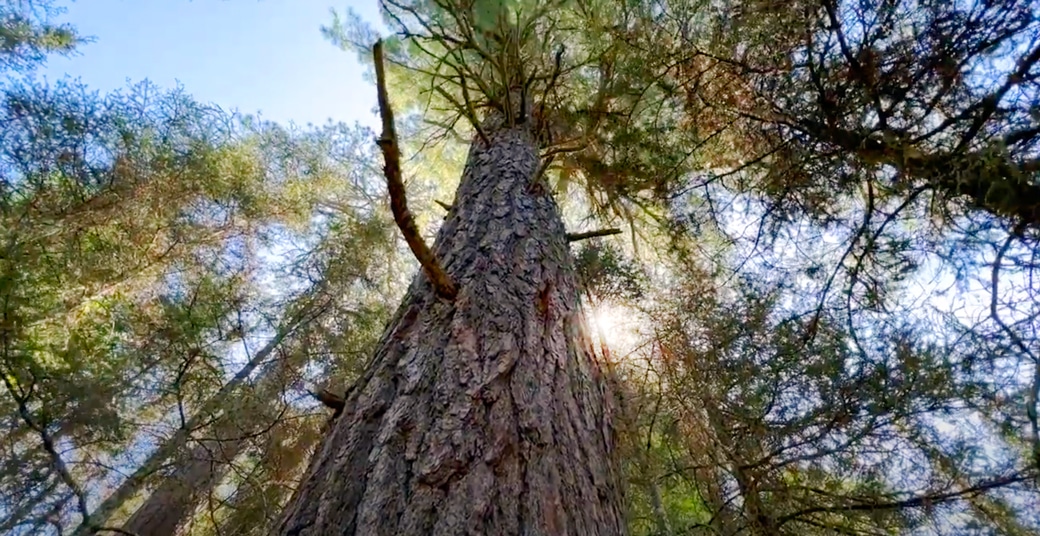The Boundary Waters Canoe Area Wilderness (BWCAW) covers 1 million acres with over 1,100 lakes along 150 miles of the Minnesota-Canada border. Get the latest news on BWCA regulations, the mining debate, wildlife, trail conditions, camping permits and more.

Silver Rapids Lodge abandons expansion plans near the BWCAW
Silver Rapids Lodge owners have canceled their plans to expand the resort near the BWCAW. As a result, they “surrendered” their permit that the Lake County Planning Commission had approved this fall. The Minnesota DNR and citizen groups had filed lawsuits against the commission, citing multiple concerns about the proposed expansion near the Boundary Waters Canoe Area Wilderness (BWCAW). The DNR would like the case to move forward.

BWCAW visitor numbers stabilize as permit cancellations increase
The USFS–Superior National Forest recently released their visitor use report. While numbers have returned to pre-Covid levels, cancellations continue to rise. Federal officials and local outfitters consider the possible reasons behind this trend.

USFS budget cuts will impact Superior National Forest visitors
The Forest Service anticipates budget cuts across the entire organization for 2025. The federal agency has requested $8.9 billion in funding but expects to receive significantly less. This reduction could negatively impact the Superior National Forest and Boundary Waters Canoe Area Wilderness. As a result, visitors should prepare for potential changes.

Remote Area Border Crossing permits on pause for Quetico
Canadian authorities have temporarily paused new and renewal applications for Remote Border Crossing Permits (RABC). This will impact visitors traveling between the Boundary Waters Canoe Area Wilderness and Quetico Provincial Park.

Colder, snowier winter ahead for Northern Minnesota
Winter enthusiasts and residents should prepare for a colder, snowier winter in northern Minnesota. NOAA recently released its forecast for 2025. Although dry conditions persist in the north, the expected forecast should benefit those who recreate in the BWCAW and beyond.

One hike, two scenic vistas—Ted Tofte Overlook and Carlton Peak
“Do we have to go hiking?” our nephew fussed as we made our way up Highway 61 along Minnesota’s North Shore…“Hiking is just walking and walking is boring.” “Well, how about this?” I wagered. “Let’s do this hike to Carlton Peak and if you don’t like hiking, we won’t do any more hikes for the rest of the trip.” “Fine,” he grumbled. “But I already know I’m not going to like it.”

DNR and citizen groups sue over resort expansion near BWCAW
The Minnesota DNR and citizen groups have filed separate lawsuits against the Lake County Planning Commission, raising concerns about expanding Silver Rapids Resort near the Boundary Waters Canoe Area Wilderness (BWCAW).

Bogus Lake wildfire burning in Superior National Forest
A third wildfire has started in the Superior National Forest. USFS crews discovered the Bogus Lake fire in northeastern Minnesota on Tuesday, October 8, 2024. The fire has burned approximately 45 acres and remains active. Firefighters from the Superior National Forest and MN DNR have responded with aircraft and personnel to assist with suppression efforts.

Wood Lake fire burning in BWCAW grows to 45 acres
A fire detected September 10 is burning on an island of Wood Lake within the BWCAW, partially contained, according to the USDA Forest Service. The fire is suspected to be human-caused and is burning in an area that is difficult to access. Some portages, lakes and entry points are closed.

Savoring Fall Solitude on the Gunflint Trail
From Minnesota’s highest peak to the mysteries of Magnetic Rock, there’s no better place to experience fall color than the Gunflint Trail. Tips for where to hike, camp and the best overlooks…

Where do they stand on protecting the BWCA?
As the election approaches, we look to key politicians’ historical positions on mining and conservation, impacting places like the Boundary Waters Canoe Area Wilderness (BWCAW). Environmental groups urge voters to support lawmakers who advocate for continued protection.

Remediating mercury and sulfur pollution in Upper Great Lakes
Since 2021, the USFS Northern Research Station’s Mercury Sulfur Initiative Working Group has been studying mercury and sulfur pollution in the Upper Great Lakes region. They will be hosting a webinar series on reducing these harmful chemicals in water and soil. Innovative research includes using trees, plants and microbes to remediate pollution.

60 years of the Wilderness Act and the BWCA
September 3 marks the anniversary of The Wilderness Act of 1964, a landmark piece of legislation in American conservation history, which established a national policy to protect wilderness areas for future generations. The act included protections for the Boundary Waters Canoe Area, which is not only the largest wilderness area east of the Rockies, but also the most widely used.

USFS to purchase 80,000 acres from the DNR within the BWCAW
Update: public comment period extended. State and federal agencies are collaborating to transfer 80,000 acres within the BWCAW to the federal government. “School Trust Lands” originally aimed to provide long-term revenue for Minnesota’s public schools, but wilderness protection measures have limited their ability to generate sufficient income. Groups see the move as a win both for wilderness and for public schools.

How portage trails are maintained in the BWCAW
Portage trails within the Boundary Waters Canoe Area Wilderness (BWCAW) are minimally maintained in keeping with the wilderness ethic. However, the USFS – Superior National Forest performs annual maintenance. This year’s heavy rains washed out parts of the portage trails and obliterated sections of roads leading to canoe entry points…

Some BWCAW entry points closed due to storm damage
Heavy rainfall from severe thunderstorms caused extensive damage to roads and flooding within the Superior National Forest (SNF), including the Boundary Waters Canoe Area Wilderness (BWCAW). In response, the USFS – Superior National Forest has closed several entry points. As a result, individuals with BWCAW permits reserved through June 22, 2024, are being notified directly of the cancellation and refunded.

Project 2025: Conservative proposal may overturn Boundary Waters mining ban
Project 2025, founded by a coalition of conservative organizations, urges the next Republican administration to overturn the 20-year ban on new mineral leasing near the BWCAW. Environmental advocates raise concerns about the risk of pollution and wilderness protection.

New hub in Ely for hiking and multi-use trail enthusiasts
The Ely Economic Development Authority is constructing a new trailhead complex just west of Ely, Minnesota. The facility will serve as a trailhead hub for the Taconite Snowmobile Trail, Prospectors Loop ATV Trail, Mesabi Trail, and eventually, the North Country Scenic Trail.

5 best places for stand-up paddleboarding in Northeast Minnesota
With 11,842 lakes and 69,200 miles of rivers and streams, it’s not hard to find somewhere to go stand-up paddleboarding in Minnesota. But in my opinion, the very best place to paddle is northeast Minnesota.

Advocacy group purchases land near the BWCAW
Friends of the Boundary Waters Wilderness recently purchased 361 acres of land along the South Kawishiwi River. This scenic river borders the Boundary Waters Canoe Area Wilderness and is considered one of America’s most endangered rivers.

Foraging wild edibles in the Superior National Forest
Berry-picking season has arrived! You can find all kinds of berries and mushrooms within the Superior National Forest and BWCAW. Foraging wild edibles is a highlight of summer adventures, connecting people to the land while adding flavor to camp meals.

Should life jackets be required in the BWCA?
Recent incidents in the BWCAW have resurfaced a long debate about whether people should be required to wear personal flotation devices…

Elder trees of the BWCA may not survive climate change
The oldest known tree in Minnesota grows in the Boundary Waters, estimated to be over 1,000 years old and informally known as the “Legacy Cedar.” Although past logging practices obliterated numerous trees, remnants of these ancient giants still linger in isolated pockets within the wilderness. Forest managers now consider their vulnerability to warming climate conditions.

New BWCAW Collaborative promotes shared learning with the USFS
The Superior National Forest and stakeholders who care about the BWCA collaborate on topics including forest stewardship, visitor use, fire management, impacts and restrictions…

Everything you need to know about the new BWCA food storage order
The USFS has updated the regulations concerning food storage in the Boundary Waters Canoe Area Wilderness. Hanging items in a tree or using approved bear-resistant containers has been a part of the regulations and rules, and now violations can bring penalties. Learn how to hang a food pack from a tree and travel safely through bear habitat.

Nan Onkka: inspired by Lake Superior and the Boundary Waters
Grand Marais printmaker Nan Onkka finds inspiration in the northwoods: “The beauty, the rawness, the timelessness of the wilderness is so totally different from agricultural landscapes or urban recreational areas. I think everyone deserves the chance to experience that, and I hope that we are able to continue to protect the waters and the woods of these wild places.”

U.S. House backs Rep. Stauber’s effort to reverse 20-year mining ban
A bill that could reverse the 20-year ban on mining leases near the Boundary Waters Canoe Area (BWCA) passed the U.S. House. It will soon move on to the Senate. Environmental advocates express concern over the reversal of mining leases that could impact watersheds in the region.

After the Greenwood Fire: reseeding the forest
This spring, the USFS conducted aerial reseeding over hundreds of acres as part of ongoing efforts to restore a previously pristine area. The Greenwood Fire burned over 26,000 acres in the Superior National Forest (SNF) and earned the title of the most extreme wildfire event of 2021.

Biden administration builds on historic efforts toward clean water
The administration recently announced a goal to protect 30 percent of lands and waters throughout the United States by 2030. This includes protection from mining impacts near wilderness areas such as the Boundary Waters Canoe Area (BWCA).


